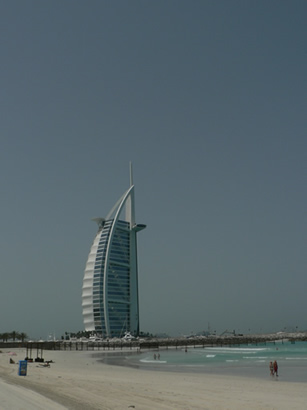July 2008, Gafencu Men Magazine, China
Dubai is the fastest growing city on earth, and as the strategic financial centre the Middle East it is becoming a playground for the very, very rich
There is a frission of guilty pleasure to be had from heading to one of the earth’s hottest, driest places to ski, swim and indulge in climate-controlled shopping sprees, and it is one that this year prompted around seven million to pack light and head to Dubai. This small nation of 1.3 million people will soon have forty mega-malls, 7 new theme parks and over 530 hotels to its name, not to mention a pulsating new club scene and a penchant for luxury sporting events. And with that kind of party laid on – well, it would be downright rude not to show up.
Back in the early sixties, when Dubai had one hotel and a lot of sand, there were few who could have looked at the old trading port and camel herding turf and thought: “chi-CHING”. But oil – oil changes everything, and after its discovery…

